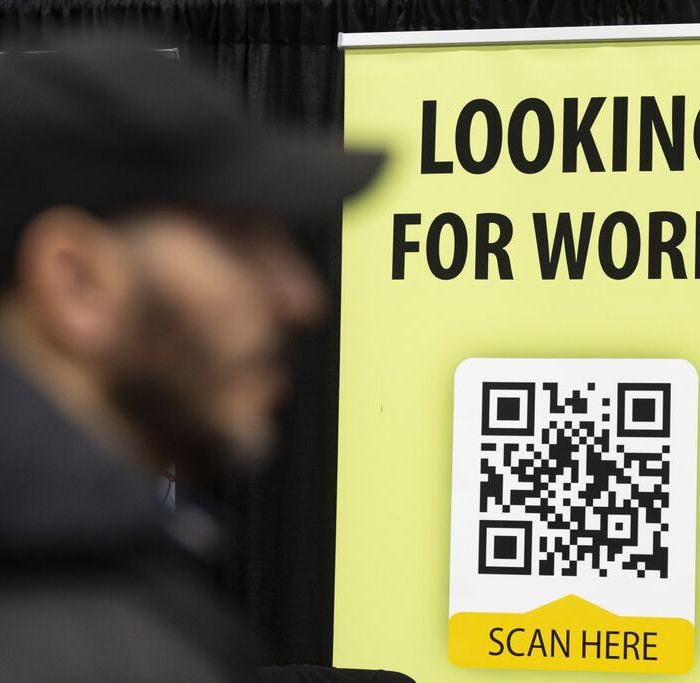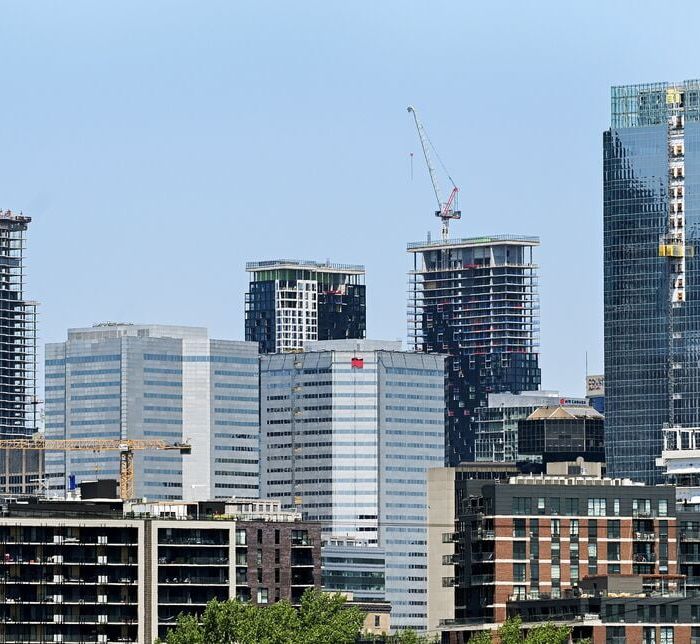At a time industrialized countries around the world are confronting declining birth rates and aging workforces, Canada is at the forefront of betting on immigration to stave off economic decline.
A country about as populous as California has added more than all the residents in San Francisco in a year. Last week, Canada surpassed 40 million people for the first time ever — with growth only expected to continue at a rapid pace as it welcomes more immigrant workers, refugees and foreign students across its borders.
For Prime Minister Justin Trudeau’s administration, the massive immigration experiment is a way to broaden the labor market as global competition for skilled workers intensifies. It also reflects a longer-term ambition for Canada to expand its international presence and emerge from the shadow of the neighboring US — similar in size by land, but home to about eight times the population and almost 12 times the gross domestic product.
“We have lots of space for people to come and occupy,” said Usha George, a professor in Canadian immigration policy at Toronto Metropolitan University. “In order to expand our agricultural, industrial and technological base, we need more people to come here.”
Now, as people flow into the country like never before, Canada has an immediate challenge: how to propel growth in rural regions in dire need of newcomers while minimizing the strains to urban centers already bulging with people.
The rewards are apparent. Population gains have boosted hiring and consumption, helping the economy withstand a rate-hike campaign by the Bank of Canada — so much so that the central bank this month had to resume tightening after a pause. Yet in a country that’s long been home to one of the world’s hottest housing markets, the government’s plan has drawn criticism that increasing immigration targets merely boosts economic output without raising living standards for individuals.
Real GDP per capita has been little changed over the past decade, and is expected to fall from its 2022 peak, based on Bank of Canada output forecasts. Productivity growth has been stagnant, and disposable income hasn’t kept up with home prices.
Even some prominent, pro-immigration economists are now saying Canada is going too far, too fast.
“It doesn’t make sense in this very short period of time to make such a rapid increase,” said David Dodge, a former Bank of Canada governor who decades ago worked on a system that’s a genesis of the current immigration program. “The speed of that adjustment exacerbates the costs and reduces the additional productivity because there’s less time for people to get adjusted.”
The Trudeau administration has set a target of adding about half a million permanent residents each year. Last year, foreign students, temporary workers and refugees made up another group that’s even larger, bringing total arrivals to a record one million. The inflow pushed Canada’s annual population growth rate to 2.7%, the fastest pace among advanced economies and rivaling developing nations Burkina Faso, Burundi and Sudan.
“You have to realize that if you don’t embrace immigration, there are whole hosts of social and economic consequences that will impact your community negatively,” Sean Fraser, Canada’s immigration minister, said in an interview. “The ability to successfully integrate people in large numbers doesn’t demand that you welcome fewer people, it demands that you advance smart immigration policies.”
Nearly one in four people in Canada are now immigrants, the largest proportion among the Group of Seven nations. At the current pace of growth, the smallest G-7 country by population would double its residents in about 26 years, and surpass Italy, France, the UK and Germany by 2050.
The looming threats of an aging population — leading to dwindling tax revenue and shrinking budgets — are playing out in different ways around the world. France’s plan to raise the retirement age by two years to 64 led to nationwide protests. Germany risks having 5 million fewer workers by the end of the decade, and already is struggling with strains in its industrial-heavy economy. Japan, where the government has long resisted immigration, is facing acute labor shortages, a rapid population decline, and dying rural towns.
In the US, immigration is a divisive political issue that’s becoming even more polarizing as thousands of migrants traverse the Mexican border daily.
By contrast, Canada’s residents have long been welcoming of newcomers, thanks to the country’s framing of immigration as an economic policy and a relatively isolated geography that limits illegal crossings. Since 1967, it has relied on a system where immigrants are assigned points based on their age, education, employment opportunities and English or French abilities, allowing the country to target skilled workers.
Fraser, the immigration minister, said the government is trying to address the strains with measures such as regionalizing immigration programs to allocate people to areas that have more capacity, and a program to bring in more people who have skills that are in great demand, such as health-care workers and homebuilders.
“This is going to help us bring the skills that we need into the economy to help alleviate some of the social pressures rather than exacerbate them,” he said.
Public support also is holding strong. Canadians look at immigration “as a value and not a policy,” said Andrew Parkin, executive director of the Environics Institute for Survey Research, which conducts an annual survey on the subject. In the most recent one, almost 70% of respondents said they disagree with the statement “overall, there is too much immigration to Canada,” the highest since the poll began in 1977.
Concerns about the changing demographic are playing out in Quebec, Canada’s second-most populous province. The French-speaking region has resisted raising its permanent resident targets, keeping the pace at just half that of the federal government on a per capita basis. Premier François Legault has said that the province wouldn’t accept large increases of newcomers like the rest of the country on concern it would lead to a decline in French language, even though that could mean further losing its demographic weight within Canada.
At the same time, industry groups have repeatedly called for higher immigration to add more permanent workers to the economy. Quebec businesses are increasingly turning to temporary staff to fill jobs, with the number of temporary foreign workers jumping 65% in just three years.
Across all provinces, many accreditation and job processes can’t expand fast enough to cope with or take advantage of the rapid increases in newcomers. That has resulted in many skilled immigrants being forced to work at entry levels or wait around for their foreign qualifications to be recognized.
More than half of recent immigrants were admitted under the economic category — meaning skilled workers and entrepreneurs who are “selected on the basis of their ability to become economically established in Canada.” While these people are a key focus of the policy, alongside refugee resettlement, the number of temporary workers has soared in recent years, leading to criticism that they will hurt wage growth and increase income inequality.
But both high- and low-skilled jobs are needed throughout Canada, where the job market remains tight. The “vast majority” of immigrants are contributing to the economy, said Kevin McNichol, CEO of Prospect Human Services, which helps Albertans and newcomers get jobs.
“This isn’t a deficit game,” he said. “They’re not taking stuff away. They’re adding, and in adding then our economy grows for everybody, which means more work, more jobs, more money.”
Those types of benefits are becoming clear in Nova Scotia, which knows the pains of a shrinking population. Up until about a decade ago, communities were slowly dying after key industries like steelmaking and coal mining shut down, taking working-age people with them. They left behind an older population and towns that struggled to support themselves.
The biggest Atlantic province now wants to double its residents to 2 million by 2060 — an ambitious target considering it took more than 150 years for Nova Scotia to reach a million people, in 2021,
Nova Scotia also is at the forefront of breaking down barriers for newcomers to work in jobs that match their potential. When Bahati Maganjo arrived in Pictou County from Kenya in 2021, she could only work as a continuing care assistant at a retirement home despite having been trained as a nurse. She is now part of the pilot fast-track program to integrate internationally-educated nurses, and is expected to start working in her profession by July.
The provincial capital of Halifax, with a population of about 480,000, has set a target to increase its residents by 10% in 2027 and by 35% in 2037. Its expanded talent pool was key in attracting companies like Cognizant Technology Solutions Corp., HuMetis Technologies Inc., Avanade Inc., and Wattpad Corp. in recent years.
The population gains contributed to a 9.3% annual jump in Halifax’s rents for a two-bedroom apartment as of October, the largest increase of any major Canadian city. But to Mayor Mike Savage, the strains are worth it.
As he put it: “Problems of growth are easier to manage than problems of stagnancy.”




